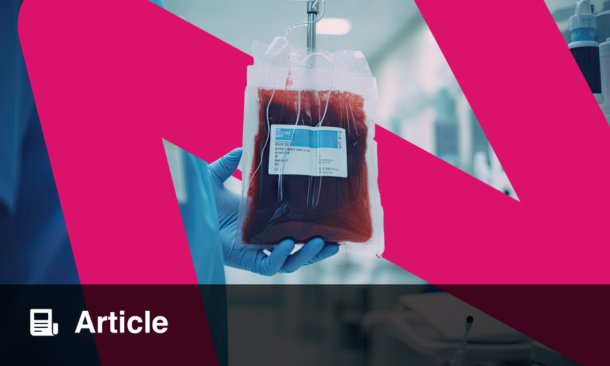Abstract
Many cases of pneumonia clustered in the city of Wuhan, China, were reported in December 2019, and source tracing has showed Huanan Seafood Market, Wuhan, China, as the origin. In this work, the authors summarise their concerns for thalassaemia patients, a unique group with several heart, liver, and blood comorbidities.
INTRODUCTION
Thalassaemia (from the Greek word thalassa [sea]) represents a group of genetic haemoglobinopathies that have emerged in certain regions of the world (Sub-Saharan Africa, the Indian subcontinent, Southeast Asia, and the Mediterranean region) where malaria was (or is) endemic. Thalassaemia is the most widely known haemoglobinopathy and several changes in the human immune system have been associated with thalassaemia, including a reduction in neutrophil counts, changes in the number and function of natural killer cells, increase in the number and function of CD8 suppression cells, dysfunction of macrophages, chemotaxis, and phagocytosis, and production of INF-γ.
Ongoing regular transfusions are the mainstay of therapy for patients with β-thalassaemia. During the current COVID-19 pandemic, several concerns have been raised regarding the diagnostics, and particularly the therapeutic approaches, for this specific population.
COVID-19 AND CARDIOVASCULAR DISEASE
The outbreak of the COVID-19 infection has compelled many countries to close the regular outpatient cardiovascular health care units until the pandemic is over. This applies to thalassaemia patients as well, who are typically advised to attend these facilities annually. While the COVID-19 infection rates remain high, it is recommended that thalassaemia patients with scheduled cardiovascular evaluations are to postpone their medical appointments for at least 3 months. This recommendation is valid for patients with absence of recent symptoms related to cardiovascular disease. Patients with recent onset of symptoms or signs of heart disease should be examined on an emergency basis. As a first step, they should refer to the attending physician who will examine and evaluate the medical condition and suggest whether specialised cardiovascular evaluation is required.
When cardiovascular evaluation is warranted, preventive measures should be applied. The standard precautionary measures include hand washing, use of surgical face masks, and sanitisation of medical equipment after use. Special measures may be applied to high risk patients, such as the use of personal protective equipment including; gowns, headcover, eye protection, shoe covers, and N95 or N99 respirator masks. Medical examination should be focussed on the specific clinical question raised by the referring physician and electrocardiography and transthoracic echo evaluation should only be performed in those cases with clinical indication.
Because of the wide range of cardiovascular clinical manifestation among β-thalassaemia patients, it is difficult to accurately predict possible cardiovascular complications as a result of acute COVID-19 infection. Early data from the general population have shown that pre-existing cardiovascular disease is associated with adverse events.1 Thus, β-thalassaemia patients with pre-existing left ventricular dysfunction are at the highest risk. In addition, vigilance is required in isolated right ventricular dysfunction as pulmonary infiltration and subsequent hypoxemia may increase the afterload of an impaired right ventricle, resulting in further deterioration of its function. Acute decompensation of the right ventricle may lead to circulatory collapse and increased mortality. Deterioration of pre-existing or new-onset pulmonary hypertension are findings that should be taken into account.
Patients without pre-existing cardiovascular disease are at a lower risk for adverse events in the case of COVID-19 infection. However, early studies have shown that up to 20% of the patients with COVID-19 infection had evidence of myocardial injury, which is defined as increased blood levels of high-sensitivity troponin I or T above the 99th-percentile upper reference limit, irrespective of clinical presentation.1 The mechanisms responsible for myocardial injury are complex and not well defined, although coronary plaque rupture, direct cardiomyocyte insult, and myocardial oxygen supply/demand mismatch have been proposed. Mild elevation of cardiac biomarkers in the absence of evidence of acute myocardial ischaemia (no related symptoms, absence of electrocardiographic abnormalities, or new echocardiographic findings) is nonspecific and of limited clinical use. On the contrary, significantly elevated cardiac biomarkers, especially when accompanied by related symptoms or evidence from electrocardiography or echocardiography should classify patients at the highest risk, as myocardial injury is associated with increased in-hospital mortality, irrespective of comorbidities.
Special consideration should be given to patients receiving appropriate medical treatment for COVID-19 infection. Current proposed medical treatment consists of a combination of azithromycin and hydroxychloroquine. Both drugs are known for prolongation of the QT interval that predisposes to lethal polymorphic ventricular arrhythmias (torsades de pointes).2 Risk stratification tools have already been published and should be used in specific patient groups.3 Previous studies regarding thalassaemia patients have shown that specific electrocardiographic abnormalities are more common among β-thalassaemia patients, with increased corrected QT (QTc) interval duration being among them.4,5 The combination therapy of azithromycin plus hydroxychloroquine should not be given to patients with a QTc interval >500 milliseconds or congenital long QT syndrome. Patients with moderately increased QTc interval (440–500 milliseconds for men and 460–500 milliseconds for women) should receive the combination therapy as inpatients under monitoring. Patients with a normal baseline QTc interval could receive the combination therapy as outpatients, provided that the QTc interval is measured at 24 hours and 72 hours after treatment initiation. The combination therapy should be withheld if the QTc interval increases >60 milliseconds compared to baseline and if it exceeds 500 milliseconds as an absolute value or syncope occurs. The decision to withdraw one agent or to reduce the dose of the combination therapy should be made on a case-by-case basis by a team of physicians including infectious disease specialists and cardiologists. Another consideration regarding the proposed use of tocilizumab, an IL-6 receptor monoclonal antibody, as a therapeutic agent in the inflammatory pathway is the reported increase in serum triglycerides.
COVID-19 AND HAEMATOLOGICAL MANIFESTATIONS
In patients who develop sepsis from COVID-19, coagulopathy development is one of the primary and persistent features associated with poor outcomes. Thalassaemic patients have low protein S and protein C levels; increased platelet accumulation; and monocyte, granulocyte, and endothelial cell activation. In most thalassaemic patients, markers of platelet and coagulation activation are persistently elevated, even without significant thromboembolic events. An increase in D-dimers is one of the most common laboratory findings in COVID-19 patients requiring hospitalisation and is not solely attributable to the presence of a thrombus but also a result of the inflammatory response.
The authors noticed the development of disseminated intravascular coagulation on Day 4 in only one surviving patient (0.6%) in the 71.4% of patients who did not survive the infection, compared to disseminated intravascular coagulation. Furthermore, they also noted a statistically significant increase in D-dimer and prothrombin time levels, and a decrease of fibrinogen levels at Days 10 and 14 in nonsurvivors. This demonstrates the considerable importance of daily laboratory monitoring in these patients.4 The only treatment widely available in patients in this regard is the prophylactic dose of low-molecular-weight heparin, that should be considered in thalassaemic patients but also in other high thrombotic risk haematological disorders in the absence of any comorbidities.
Patients with thalassaemia major progressively develop iron overload. Serum ferritin level is traditionally used for serial testing and some patients with excessive COVID-19 sepsis have laboratory evidence of an increased inflammatory response, comparable to cytokine release syndrome, and persistent fever. Elevated inflammatory markers such as ferritin and elevated proinflammatory cytokines, thrombocytopenia with increased bleeding risk in patients who are receiving anticoagulant, or antiplatelet treatment and lymphopenia have been associated with critical and fatal outcome.6 Another issue for this specific patient population is blood transfusion. It should be made clear that systematically transfused patients should not delay or postpone their scheduled transfusions despite fear of SARS-CoV-2 infection. Outbreaks of emerging infections negatively affected blood supply, and the prospect of transfusion transmission is worth consideration. Worldwide, most blood centres or blood banks have adopted the following actions during the recent outbreak: 1) taking body temperature prior blood donation, 2) supplementary questions in the donor evaluation questionnaire to determine high-risk donors, 3) recall all blood donors and ask them and their families about their general physical condition following the donation while temporarily not offering the collected blood bag. Lastly, the authors also propose blood donors to be screened using smears or serological tests (anti-SARS-CoV-2 IgG and IgM). They also consider the increased risk of haemolytic crisis in thalassaemic patients with glucose 6-phosphate dehydrogenase deficiency and the need to carry out preventive enzymatic screening tests even for asymptomatic patients before initiating chloroquine or hydroxychloroquine treatment. More than 1,300 clinical trials include drugs and monoclonal antibodies while aiming to evaluate the consequences of COVID-19 infections of patients with haematological diseases.7 The effect of COVID-19 on bone marrow transplant recipients is unknown, but the authors encourage donors of hematopoietic cells to continue volunteering and further encourage the continuation of gene therapy programmes with all the appropriate COVID-19 precautions.8
COVID-19 AND THE LIVER
Based on medical records from hospitalised patients, COVID-19 infection can cause liver injury with increased levels of aspartate aminotransferase and alanine transaminase, and slightly elevated bilirubin in a proportion ranging from 14–53%.
Liver abnormalities occur more frequently in severe COVID-19 cases compared to mild cases.8 Liver injury in mild COVID-19 cases is transient and does not require specific treatment. Additionally, patients with underlying liver disease may be more susceptible to liver injury but strong data are currently lacking.9
The proposed off-label therapeutic agents (azithromycin, chloroquine, remdesivir, and tocilizumab) used in clinical trials to manage severe symptomatic COVID-19 infected patients may be hepatotoxic and close monitoring of liver enzymes is mandatory. The presence of abnormal liver biochemistry is not a contraindication for the use of anti-COVID 19 investigational drugs.10
Furthermore, in thalassaemic patients with chronic hepatitis C virus infection the new antivirals (direct-acting antivirals) do not have any drug interaction with chloroquine or azithromycin and, notably, sofosbuvir has been found to exhibit anti-COVID-19 RNA polymerase activity in vitro. Furthermore, treatment with direct-acting antivirals may theoretically, in parallel, have a beneficial effect on COVID-19 superinfection but this has yet to be proven.11
Patients with hepatocellular carcinoma should continue appropriate imaging surveillance and treatment.
DISCUSSION
In general, there are few to no treatment options for unexpectedly emerging viral diseases. Parallel to this awareness, currently there is no vaccine to effectively treat or to prevent infection with COVID-19. The group of β-thalassaemia patients are a specific population with multisystemic involvement thus several concerns on prophylactic practices have been raised and a more cautious therapeutic approach established to avoid any severe complication of COVID-19 infection.
The authors propose the assessment of common laboratory characteristics such as lymphopenia, liver enzymes, lactic dehydrogenases inflammatory markers (e.g., C-reactive protein, and ferritin), prothrombin time, troponin, creatine phosphokinase, renal injury markers, etc. and monitoring for any changes in carriers or asymptomatic patients. For suspected patients, chest X-ray and electrocardiograms are also considered.
To avoid the spread of the virus to other patients, transfusions should be performed in a dedicated isolation zone. Patients should be encouraged to receive medical treatment, communicate with their doctors, and seek psychological support during the pandemic. Chloroquine has been well established with in vitro effects on uncoating inhibition and/or post-translation modifications of newly synthesised proteins, especially glycosylation inhibition in many viruses, including HIV. Recent studies have shown that remdesivir and chloroquine are highly successful in suppressing the coronavirus in vitro.
Both in vitro and human-based SARS-CoV and MERS-CoV trial molecules are being tested for COVID-19. Studies evaluating antiviral activity of Type I and Type II interferons (IFN) revealed that IFN-β is the most potent IFN and limited in vitro replication of MERS-CoV.
According to a South Korean human MERS-CoV research study, the use of a combination of lopinavir/ritonavir (anti-HIV drugs), EJMO 5 pegylated IFN, and ribavirin has so far been efficient in viral clearance.11,12
CONCLUSION
Since patients with β-thalassaemia are considered a risk population for COVID-19 infection, measures such as effective dissemination of disease information on the elimination of the source of infection, early detection, monitoring, isolation, supportive care and the avoidance of needless panic should be taken. Centers for Disease Control and Prevention (CDC) encourage individuals to follow simple precautions such as hand washing and sanitisation, using disinfectant solutions, and avoiding contact with patients to prevent droplet spread of viruses.









